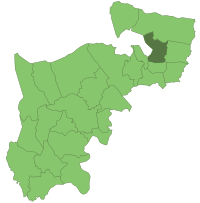
Southgate is a suburban area of north London, England, in the London Borough of Enfield, 8 miles (13 km) north of Charing Cross.

The London Borough of Enfield is a London borough in Greater London, England. The main communities in the borough are Edmonton, Enfield, Southgate and Palmers Green. Enfield is an Outer London borough and forms part of North London, being the northernmost borough and bordering Hertfordshire to the north and Essex to the northeast. The local authority is Enfield London Borough Council, based at Enfield Civic Centre. The borough's population is estimated to be 333,794.

The Metropolitan Borough of Hackney was a metropolitan borough of the County of London from 1900 to 1965. Its area became part of the London Borough of Hackney.

Enfield Southgate was a constituency in the House of Commons of the UK Parliament. It was created in 1950 as Southgate.

Finchley, which is now in north London, was a local government district in Middlesex, England, from 1878 to 1965. Finchley Local Board first met in 1878. It became Finchley Urban District Council in 1895 and the Municipal Borough of Finchley in 1933. In 1965 Middlesex was abolished and Finchley became part of the London Borough of Barnet.
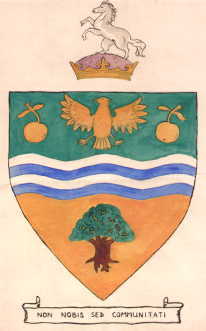
Bexley was a local government district in north west Kent from 1880 to 1965 covering the parish of Bexley, which included both Bexley village and Bexleyheath.

Wembley was an urban district and later a municipal borough in Middlesex, England from 1894 to 1965.
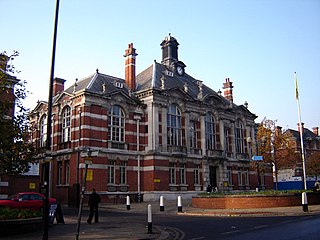
Tottenham was a local government district in north east Middlesex from 1850 to 1965. It was part of the London postal district and Metropolitan Police District.

Acton was a local government district in Middlesex, England from 1865 to 1965.
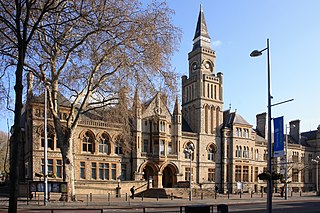
Ealing was a local government district from 1863 to 1965 around the town of Ealing which formed part of the built up area of London until 1965, where it became part of Greater London.
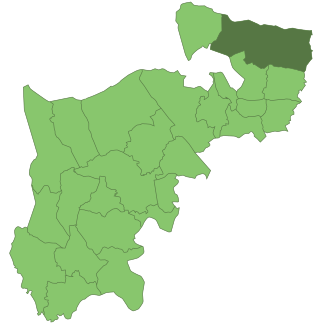
Enfield was a local government district in Middlesex, England from 1850 to 1965.

Edmonton was a local government district in north-east Middlesex, England, from 1850 to 1965.

Uxbridge was a local government district in north west Middlesex, England, from 1849 to 1965, seated in the town of Uxbridge.

Twickenham was a local government district in Middlesex, England from 1868 to 1965.

The London Borough of Enfield is the northernmost of the Outer London boroughs. The borough lies within the Metropolitan Green Belt, and several of its 123 or more parks and open spaces are part of it. The ancient Enfield Chase, remnants of which still exist, occupied much of the area. In addition to many playgrounds and sports facilities, the main areas of public open space are:
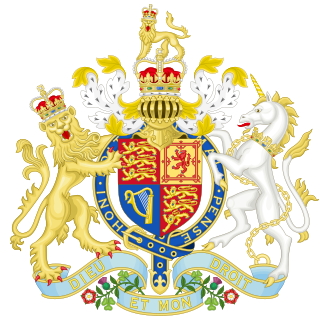
The London Government Act 1963 is an act of the Parliament of the United Kingdom, which created Greater London and a new local government structure within it. The Act significantly reduced the number of local government districts in the area, resulting in local authorities responsible for larger areas and populations. The upper tier of local government was reformed to cover the whole of the Greater London area and with a more strategic role; and the split of functions between upper and lower tiers was recast. The Act classified the boroughs into inner and outer London groups. The City of London and its corporation were essentially unreformed by the legislation. Subsequent amendments to the Act have significantly amended the upper tier arrangements, with the Greater London Council abolished in 1986, and the Greater London Authority introduced in 2000. As of 2024, the London boroughs are more or less identical to those created in 1965, although with some enhanced powers over services such as waste management and education.

Edmonton is one of six hundreds of the historic county of Middlesex, England. A rotated L-shape, its area has been in the south and east firmly part of the urban growth of London. Since the 1965 formation of London boroughs it mainly corresponds to the London Boroughs of Enfield, a negligible portion of Barnet and a narrow majority of Haringey. Its ancient parish of South Mimms has since 1965 been part of the Hertsmere district in Hertfordshire.
The History of local government districts in Middlesex outside the metropolitan area began in 1835 with the formation of poor law unions. This was followed by the creation of various forms of local government body to administer the rapidly growing towns of the area. By 1934 until its abolition in 1965, the entire county was divided into urban districts or municipal boroughs.

Enfield London Borough Council, which styles itself Enfield Council, is the local authority for the London Borough of Enfield in Greater London, England. It is a London borough council, one of 32 in London. The council has been under Labour majority control since 2010. It is based at Enfield Civic Centre.

The coat of arms of the London Borough of Enfield is the official heraldic arms of the London Borough of Enfield, granted on 15 August 1966.

